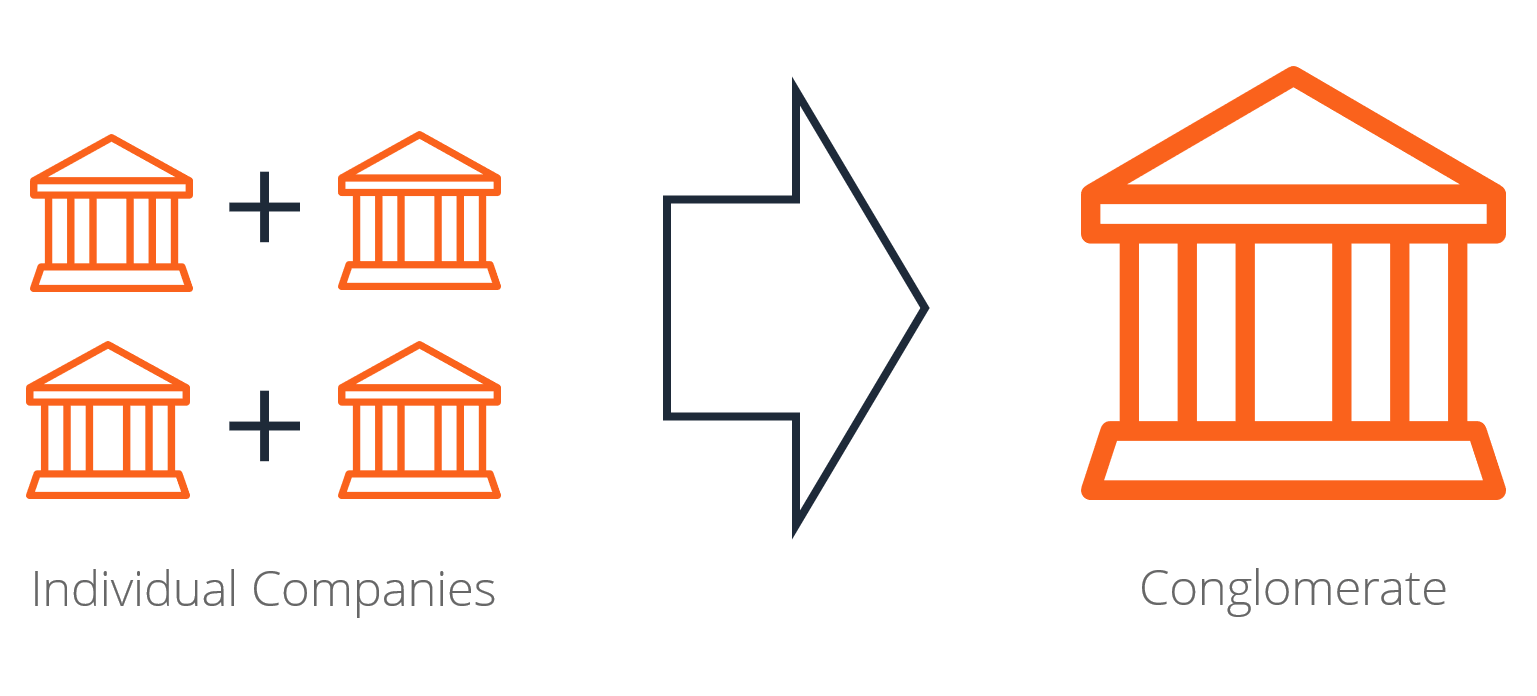Mergers and acquisitions are the main organizational forms of integration processes, which include a wide range of unique opportunities for business. In this article, we will focus on the example of the conglomerate merger.
What is the conglomerate merger?
The economic essence of mergers and acquisitions (M&A) is that integration processes aimed at achieving competitive strategic advantages in change management are characterized by high dynamics and are carried out through mechanisms of reorganization, restructuring, establishment of corporate control.
M&A deals are the acquisition of control by one company over another, the management of it with the acquisition of absolute or partial ownership. M&A is mostly done by buying shares, which means buying a firm. In this case, the takeover procedure is distinguished by the fact that the company that buys (acquires) buys back from the shareholders of the acquired (absorbed) campaign all or most of the shares. As a result, the shareholders of the absorbed campaign lose their rights to a share in the capital of the new merged campaign. Therefore, an M&A deal is a mechanism for redistributing ownership from less efficient owners to more efficient ones or a way to transfer company management from less efficient managers to more efficient ones in order to increase profitability.
There are several types of M&A deals:
- horizontal
- vertical
- parallel
- conglomerates
- reorganization
Conglomerate mergers – associations of companies not related by certain production or sales relations, mergers of this type – mergers of a firm in one industry with a firm in another industry, which is neither a supplier, nor consumer, nor competitor. The benefits of such a merger are not obvious and depend on the specific situation.
Studies of mergers that took place in the second half of the 20th century show that most mergers – up to 80% – can be classified as a conglomerate. Traditionally, it is assumed that the incentive for conglomerate mergers, reflecting the real synergy gains, is risk reduction. Risk is the probability of deviation of the actual income from the expected value; the more volatile and wider the range of fluctuations of possible returns, the higher the risk, and vice versa. The risk arises from the fact that judgments about expected income are based on limited information about future events.
Examples of conglomerate mergers in different industries
There are three types of conglomerate mergers:
- product line extension mergers, i.e. a mix of non-competing products with similar distribution channels and production processes. An example is an acquisition by Procter & Gamble, a leading manufacturer of detergents, of Clorox, a manufacturer of laundry bleaching agents.
- market extension mergers, i.e. Acquisition of additional sales channels, such as supermarkets, in geographic areas not previously served.
- pure conglomerate mergers with no commonality.
There are many different types of more specialized conglomerates in the world today, from manufacturing to the media to food.
The main reasons that influenced the growth in the volume of M&A in the seventh wave: this is the process of globalization, rising commodity prices, low-interest rates on credit markets, an increase in the number and volume of private investment funds. The main features of this wave are even greater globalization and even greater proportions. In the 70s, the active diversification of large companies continued and it was associated, first of all, with the desire to acquire assets in the fields of electronics and telecommunications. The FTC estimates that from 1965 to 1975, 80% of mergers resulted in conglomerates.


